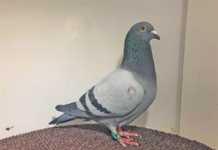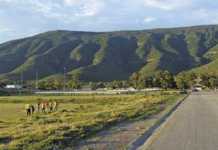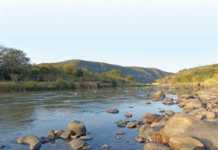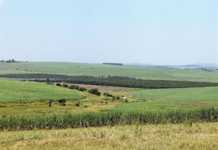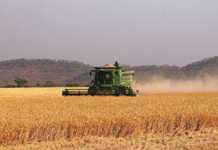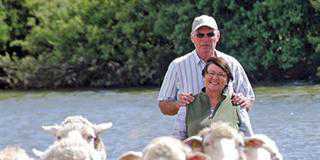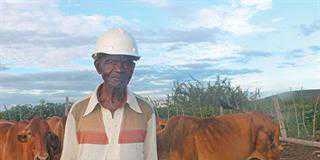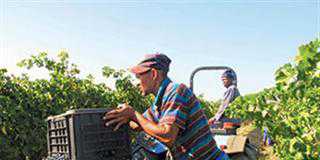The fertile valleys and flood plains of the former Transkei boast some of South Africa’s best agricultural land. Yet, the region imports most of its food, while infant mortality from malnutrition is rife.
Stephan Hofstätter reports on a tragic case of squandered potential.
Malusi Ngqose is one of the lucky ones. He has cash flow reserves and can still afford the R600 to R700 needed to have his fields ploughed with a tractor. This allows him to grow enough to feed his family, with a small surplus that he sells to local traders and mills.
But Ngqose’s reserves are dwindling fast. He might survive – if the Eastern Cape government honours its promises to come to the rescue of smallholders like him. But he’s not holding his breath. He’s a member of a committee representing the handful of farmers still working the land in the Kentani district in the former Transkei and was among a delegation that has visited Bisho three times in the last two years to plead their cause with senior officials. They’ve been promised much, and told to wait and see.
“We were promised tractors, but none arrived. In 2003 we were promised fencing, but none arrived,” he says. The result is most of his neighbours have stopped ploughing their fields. “Our hearts are sore,” says Ngqose. “We are helpless.”
Driving through the hills surrounding Kentani is an eerie experience. No scientific studies have been conducted here but anecdotal evidence suggests the area has some of South Africa’s best agricultural land. Many of the fertile, well-watered valleys and flood plains are terraced. Today this land resembles the remnants of a vanished civilisation. Apart from rare maize patches, the fields are barren as far as the eye can see and in all directions. In many areas cultivated fields have reverted to grassland dotted with well-fed cattle.
It wasn’t always like this. Traders who’ve lived here for decades say the area once had superior maize and sorghum crops and a thriving pineapple plantation. What maize is still grown produces good yields, and tropical fruit such as avocado and macadamia thrive from seed plantings.
“The tanks in our storerooms were overflowing,” says one trader. “Now we import from the Free State.” The same goes for other crops, such as beans, for which there remains a high demand.
Another retailer, with a store in Kentani’s main street, noted a dramatic drop in fertiliser sales. “Four years ago we sold 260 tons. That went down to 120 tons two years ago,” he explains. “Last year we sold 30 tons.” Test plantings in the area proved beans, sunflower, citrus, other subtropical fruit and a range of vegetables are capable of high yields. Yet, this vast potential remains untapped.
The same is true for most of the former Transkei, especially the wide sub-tropical region – a 50km coastal belt running from the Great Kei River to Port Edward. Soil conditions are generally good, many rivers bisect the area, rainfall is plentiful, and winters are mild.
However, the region imports most staples consumed, with poverty levels so high that children are dying of malnutrition. In 2002, Sunday Times reported a study by the University of the Western Cape, the Department of Health and the Health Systems Trust had found that 166 children had died of malnutrition in the first six months of the year in 11 Eastern Cape hospitals, mostly in the former Transkei.
Poverty indicators for OR Tambo district municipality, which covers most of Transkei, paint a gloomy picture that’s getting worse. According to the provincial government, households living below poverty line (R800 or less a month) went up from 65% in 1996 to 74% in 2001, reaching an estimated 88% last year. The average for the Eastern Cape, one of SA’s poorest provinces, is 64%. Over 70% of the economically active population have no jobs (compared with a provincial average of 27%).
’Back to the land’
The Transkei’s untapped farming potential was partly what prompted land and agriculture minister Lulama Xingwana to launch her “Back to the land” campaign last year. She told Farmer’s Weekly when she was growing up in the Transkei her father was a small-scale farmer, and her family always had something to eat.
She says she’s seen unused agricultural land in the Eastern Cape, Mpumalanga and North West. “In many of our rural areas, communal land lies fallow. Those who have land must go back and plough that land, and produce,” she comments.
Most of the explanations put forward for the Transkei’s failure to tap its enormous agricultural wealth are economic. The rising cost of inputs and equipment has simply made it too expensive to farm even the most fertile and productive land. Most households therefore prefer to use their tiny cash reserves from pooled social grants to buy food, rather than grow it themselves.
The demise of agriculture as a commercial activity has also been linked to a legacy of underinvestment in road and farm infrastructure inherited from apartheid. Although substantial sums of public money were invested in irrigation schemes and plantations in the former Transkei, its status as a homeland meant it was not integrated into regional and national transport networks and markets. This remains to be addressed, dramatically illustrated when crossing the Great Kei River. A new road that connects the N2 near East London to Kei Mouth was supposed to loop back to the N2 at Butterworth via Kentani.
The stretch south of the Kei was completed last December. Across the river it remains a rutted track. It is also well documented that under apartheid spending per capita in all sectors, from education to agricultural extension services, was much higher for whites than for blacks. Massive backlogs remain.
None of which explains why the region has been getting poorer, and growing and eating less, since the advent of democracy. The answer lies in politics. Major development plans and hundreds of smaller projects involving ecotourism, commercial agriculture and agri-processing, forestry and public infrastructure have been on the cards for years. These could pour billions into the area, but few have reached fruition.
To date the major obstacles to development have been poor capacity at municipal level, conflicting vested interests, insecure land tenure, jurisdictional confusion and institutional tensions. Corruption and financial mismanagement remain serious issues that the provincial leadership appears unable or unwilling to tackle.
The Public Service Accountability Monitor based in Grahamstown reported last year the provincial administration had been unable to account for R30,2 billion out of R34,1 billion spent in 2005/06. This represents a deterioration of financial management, despite previous assurances by political leadership that Treasury would ensure provincial departments cleaned up their act.
The most recent result of poor controls was the collapse of the province’s feeding scheme, with R100 million unaccounted for. A forensic audit last December found widespread corrupt practices, including overpaying suppliers, approving payments to non-existent suppliers, and officials with interests in agricultural co-ops supplying food. Six officials have since been suspended, and the scheme put on hold. Which means one million indigent children are likely to go hungry when current supplies run out this month while Bisho sorts the mess out. For many this means the loss of their only meal of the day.
Solving the Eastern Cape’s failure to capitalise on development opportunities requires political leadership of the highest calibre – a commodity the province sorely lacks.
This is illustrated by the collapse of the Mkambati Nature Reserve deal. In 2003 ecotourism outfits Mantis and Wilderness Safaris planned to invest up to R500 million in 10 years in the development of tourism ventures in the park. The impoverished community, which had won a land claim on the park, stood to gain 46% of net profits or 9% of turnover, a 30% stake in the business, 30% of dividends and 500 permanent jobs.
The deal ran into opposition from the Eastern Cape Tourism Board, which feared losing control of a prestigious and potentially lucrative asset and refused to recognise the community’s ownership of the land. Next, senior officials from OR Tambo municipality weighed in, putting pressure on the claimants to channel funds through its development agency, described by detractors as a front for the enrichment of senior politicians. Finally, the newly appointed economic affairs MEC, Andre de Wet, refused to endorse the project because it was associated with his axed predecessor Enoch Godongwana.
Since then De Wet has been replaced by Mbulelo Sogoni, who apparently supports the deal. Now community ownership of the land is no longer an issue, and talks with investors have resumed. In the meantime five years have been wasted, with poverty, social tensions and violent crime against tourists on the rise.
“Everyone has designs on every piece of real estate here,” says a veteran community worker on the Wild Coast. “The person with the most influence gets his way.” As Mkambati illustrates, people with influence can easily block developments which are not in their interest. “Add the fact that at least five departments, which are all competing with each other, have jurisdiction over a piece of land you’re trying to develop, and you never get off the ground,” he says.
A senior economic advisor, who wishes to remain anonymous, to the provincial government believes reforming communal land tenure is the key to unlocking the region’s wealth. Doing so requires strong political direction, but few leaders are prepared to risk dismantling communal land systems, which would constitute a direct attack on existing power networks, elected and unelected, he says.
A number of promising plans to revive agriculture in the former Transkei are on the cards. They include a massive waterworks scheme on the Mzimvubu Basin near Port St Johns, the largest undeveloped river in SA; revitalising tea and sugar estates and surrounding land, and diversifying into more profitable crops, including those suitable for biofuels such as jatropha; and a public-private sector partnership to exploit Kentani’s commercial agriculture potential through investment in infrastructure and mechanisation.
But unless the province’s politicians and officials in all three tiers of government can see beyond sectarian self-interest and begin to serve the greater good, these projects will collapse like their predecessors, farmers like Malusi Ngqose will soon go out of business – and children will continue to starve.

